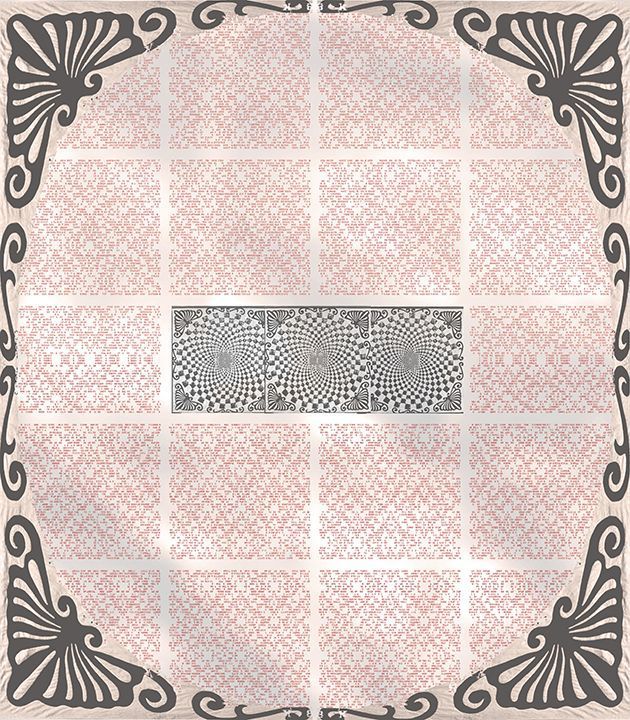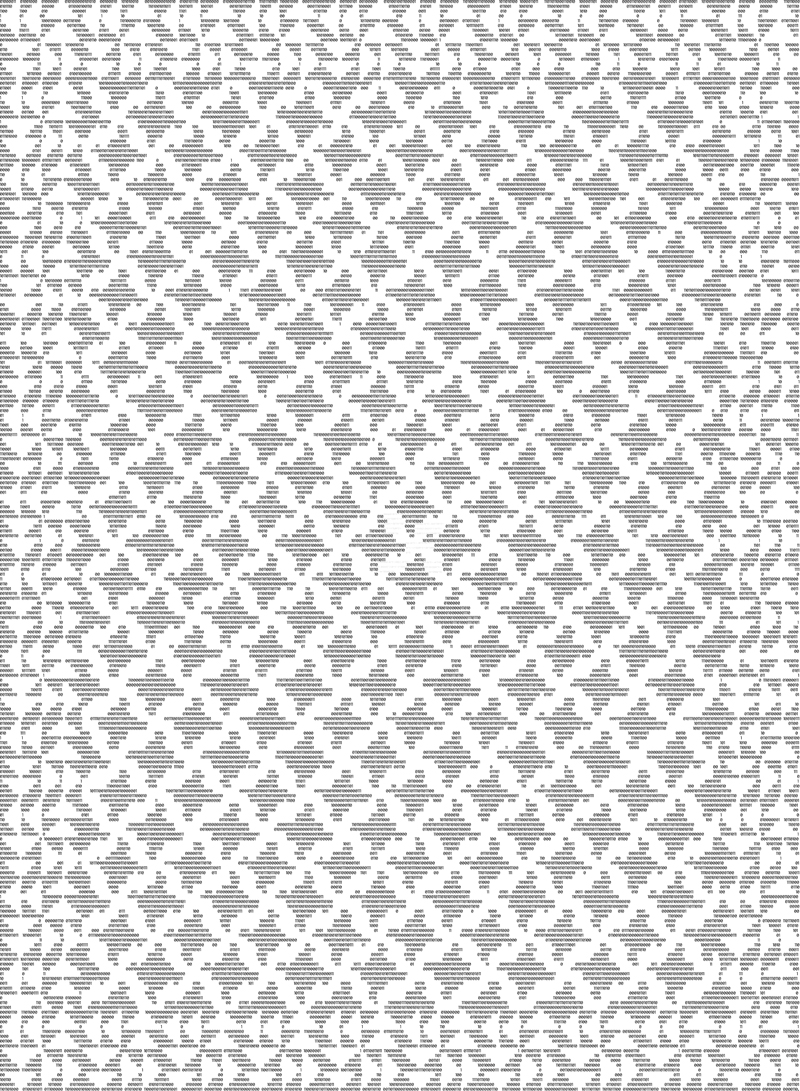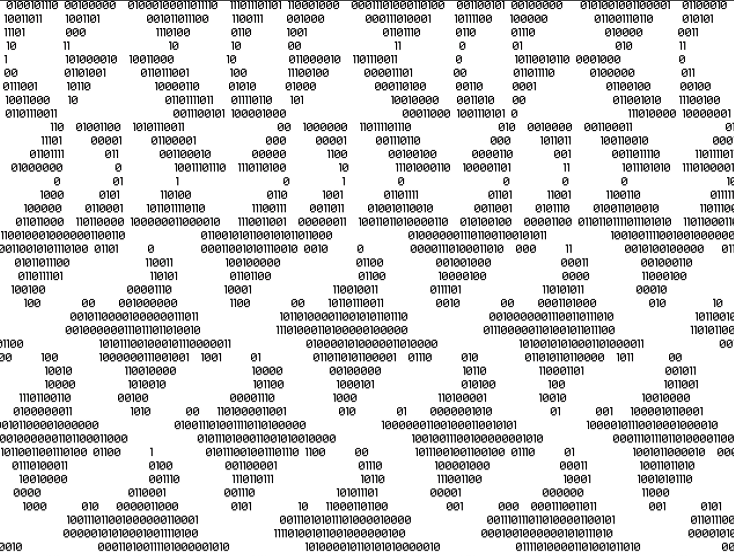Digital Tapestries
TOPIC: TRANSLATIONS
Binary code translations of well-known texts in Emily Lazerwitz's "digital hand-typed tapestries"

Artist statement: “My practice focuses on the intersection of art, craft, technology, and language...I have been working with digital means to weave traditional designs. My laptop becomes my loom and each keystroke a stitch. They are hand-typed, line-by-line from left to right just as they would be done normally. They are hand-made digital pieces: an oxymoron. The technology loses its sense of speed and effortlessness. It is clear how painstaking the process is...” Read More
Digital Tapestries: I create work that takes language, and in the case of my tapestries, manipulates it so that it cannot be understood. I do not change the content of the text or make it illegible. The ability to read the text is still possible, but most would not have the time or desire to attempt to read it.
I chose a text that means something to me. Recently they have been related to mathematics, such as chapter 7 of Alice in Wonderland, or textiles, such as the myth of Arachne. I translate the chosen text into binary code through an algorithm. The algorithm converts each character including spaces into a number and then that number is further translated into an 8 bit number consisting of 0s and 1s depending on its relationship with the powers of 2. Then I take these numbers and add spaces to them. The spaces correlate to a pattern. The pattern is based off of textile patterns that I think are relevant to the text. Sometimes they are more literal in their relationship and sometimes not. I finish when the last digit is in place.
It should be noted that spaces are not read in binary code, and therefore do not change the meaning of the code. Thus, if the pattern was inserted into the reverse algorithm, the text would read back exactly as it was. Hence, the content of the text has not changed, simply the context, several times over.
Once the process starts my decisions become more absolute. Like any system, the more decisions one makes, the fewer options there are. None of my work is entirely finished. There still are more options. I like to think I make a textile when I finish a work; however, a more accurate description would be a textile pattern. The process itself is weaving, yet the outcome is one that has far more potential than a traditional textile because of the very reasons it is not one.

